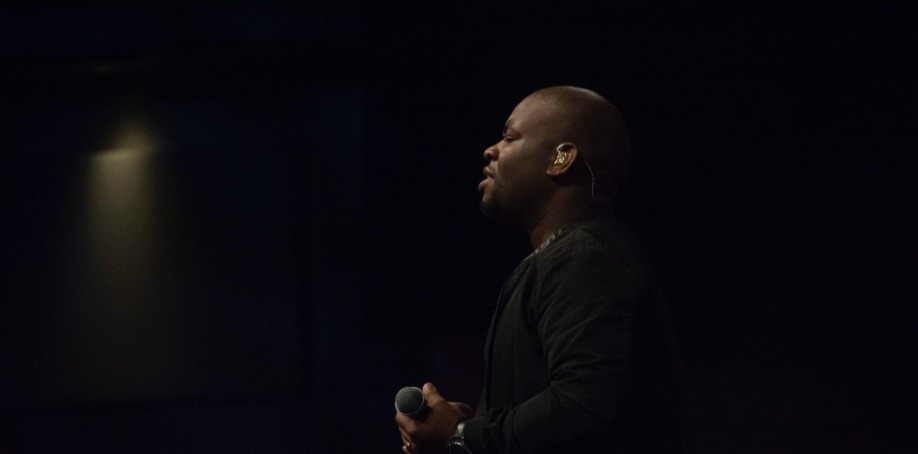
The key to a memorable event isn't the execution of the event itself. It's what you do to keep people talking about the event in the days and weeks afterward. Obviously, you don't want people to remember your event for the wrong reason.
Your AV equipment, and how you use it, plays a big part in getting people to remember your event for the right way.
Take image quality, for example. It's one of those things that most people don't even think about — until something goes wrong. You probably don't remember the last time someone's presentation was crystal clear. But you probably remember the last time a presentation was blurry, or difficult to see.
Jono Pratt, the head of video at AV Events, swears by our IP Flash Caster when it comes to ensuring clear image quality during an event.
But just what can you do with better images? Why are they so important? That's what we are going to explore here.
Using Imagery to Take Your Event to the Next Level
When you first start looking into AV equipment, you might feel a bit overwhelmed. Azavista notes just how much AV equipment you'll need for a presentation. “You will need inputs for your speakers' presentations, back-up presentations and possibly videos that you intend to show at your event – so be sure to think of all the possibilities; the devil is in the details!”
It's easy to overlook some of these key details. But image quality is one detail that should never be ignored. (In fact, it's so important that IEEE Access released a comprehensive study on how to assess the subject.)
One big reason why? Image quality sets the entire tone for a presentation. Poor image quality can make an otherwise professional presentation appear amateurish.
Further, better images make an event more engaging. As BML-Blackbird notes, “The right screen can add impact and engage your audience drawing them into the presentations.” This goes beyond screens to the images that you put on them.
If your visual quality is fuzzy or indistinct, any appeal that your visuals might have had will quickly disappear. Your audience won't be able to engage with it.
Adding multiple screens can add a layer of complication to a networked video distribution system built with inferior hardware. In such cases, images can get out of sync, distracting the audience and pulling their focus away from the event itself.
Image quality goes beyond the short-term success of your event, too. As Sue Pelletier notes at MeetingsNet, strong and unique visuals encourage people who go to your event to share images on social media afterward. As social media is so image-driven, you need to make sure that the quality of your images are good enough to share.

Choosing the Right Hardware for an Event
Now, when it comes to picking the right equipment, there are a few things you need to keep in mind. Jorge Lopez at Social Tables suggests not finalizing your list until you know who is going to be there. “Once you know exactly who your special guests, speakers, and entertainment will be and get their input, then you can put together a list of exactly what you need.”
UK-based events producer Rob Morrison also points out that audience size is a contributing factor to choosing the right kind of equipment.
Finally, as events industry expert Katie Christianson states, you can't assume that the location will have the AV equipment to make good image quality a reality. Traditional AV, which is what's often built into locations, can be difficult to learn and even harder to get to work with your creative vision.
That's why so many people are turning to AV over IP.
Why AV Over IP?
AV over IP distributes AV signals over the internet. It is easier to learn than many traditional systems. As Commercial Integrator's Tom Leblanc writes, AV over IP opens up possibilities. It's robust, scalable and integrator-friendly. And it can completely change the way that event management works, too.
As Keith Kazmer at Black Box Network Services points out, one of its benefits is the quality of its visuals. “AV over IP presents several key advantages compared to non-networked point-to-point or point-to-multi-point solutions, including full HD capabilities with near-zero latency and the ability to introduce dynamically changing content.”
AV over IP is a relatively new system in the world of AV, which makes some hesitant to try it for fear of troubleshooting or general quality. But Paul Harris, CEO of Aurora Multimedia, notes that while there used to be some concern over the quality of AV over IP, those concerns are no longer founded.
“AV over IP is now — and perhaps inevitably — a highly sought solution for customers distributing important video content across their organizations,” says Commercial Integrator.
As Megan Santosus notes, that there are several kinds of networked AV to choose from, including HDBaseT, SDVoE, AVB.
But this is why Jono Pratt chooses Arista's own IP Flash Caster for AV Events.

Why the IP Flash Caster
The IP Flash Caster can distribute 4K UHD AV signals via 10GbE network switches, and it provides 1GbE Ethernet over 10GbE Network Switch. It has both colorspace and framerate conversion, and has several other features that makes it a favorite of many event planners.
Pratt uses the IP Flash caster to transport images to multiple screens from a single cable. He recently told SVC Online why he chose Arista from among all the other providers to ensure crystal clear imagery during his clients' events:
“Using Arista, I could take an uncompressed signal from control to the screen at 4K resolution with no noticeable delay. Due to the IP nature of Arista's system, I can put multiple streams down a single cable—saving valuable time in the process.”
During events, time is of the essence. You don't want to take too long setting up or fiddling with technology in between visual elements. This is why AV Events uses the IP Flash Caster, which is flexible and able to work with a wide range of both visual and audio needs.
Pratt went on to praise Arista's tech support, and the flexibility of the technology. “Clients are loving the ability to switch content on foldback TVs on the fly, along with having no delays or artifacts to the main hero screen.”
As noted earlier, unsynced visuals can greatly detract from the event experience. It's easy to see why AV Events' clients enjoy knowing that they can switch content easily without having to worry about delays. This makes sure that audiences focus on what's really important: the content of the event itself.
Ultimately AV Events relies on the Flash Caster to ensure “clear, captivating visuals that engage and inspire the audience.”
To learn more about the IP Flash Caster, click here.
Images by: kasto/©123RF Stock Photo, Richie Lugo, Nathan Dumlao


